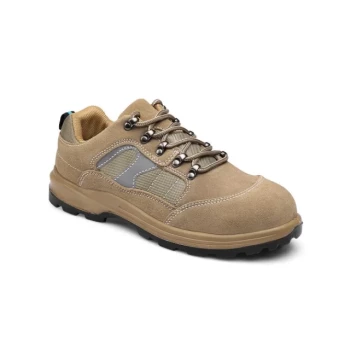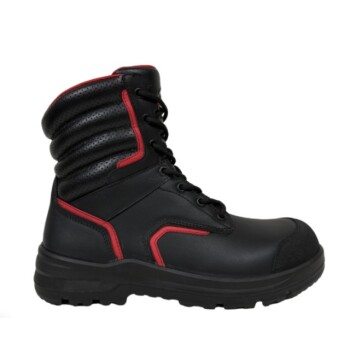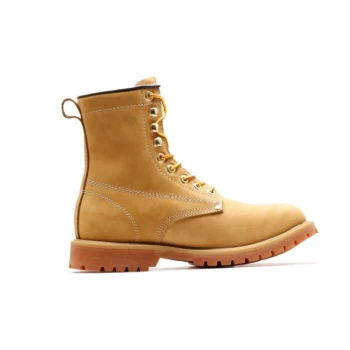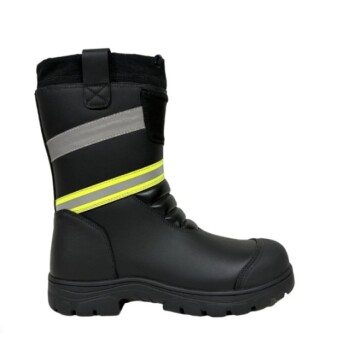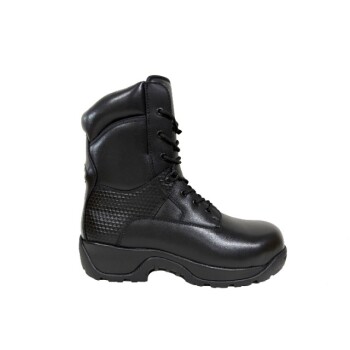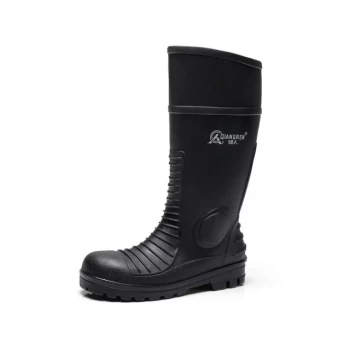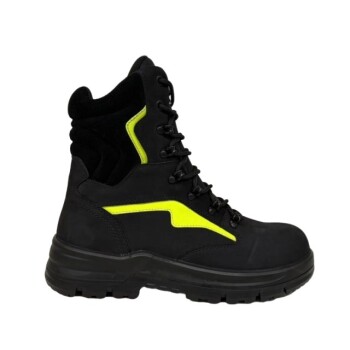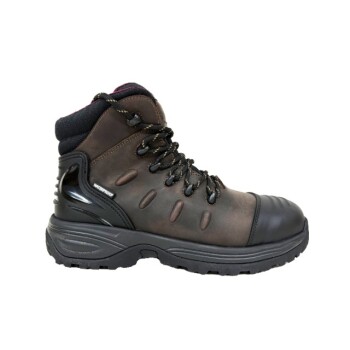Absolutely, you can wear work boots every day, but this comes with a critical condition. The ability to do so comfortably and safely depends entirely on whether the boots are ergonomically correct for your specific feet and daily demands.
The question isn't whether you can wear work boots daily, but whether the specific boots you choose are engineered for all-day wear and fit you correctly. A proper, supportive fit is the single most important factor in preventing discomfort and long-term foot issues.
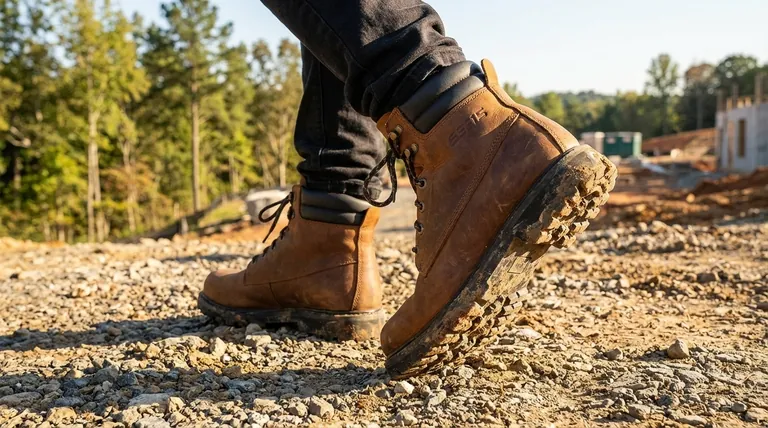
The Foundation of All-Day Wear: Ergonomic Fit
Many people experience foot pain simply because they mistake their shoe size for their proper fit. A boot that is technically the right size but wrong for your foot's shape will inevitably cause problems.
Why Fit is Non-Negotiable
An incorrect fit creates pressure points, friction, and improper alignment of your foot's bones and joints. Over hours and days, this leads to everything from blisters and calluses to more serious conditions like plantar fasciitis.
An ergonomically correct boot, on the other hand, acts as a supportive extension of your foot. It cradles your heel, supports your arch, and gives your toes adequate space to splay naturally as you walk.
Hallmarks of a Perfect Fit
When trying on boots, you should look for these key indicators:
- Heel Lock: Your heel should be snug with minimal to no slipping as you walk.
- Toe Room: You should have about a half-inch of space between your longest toe and the end of the boot.
- Width: The boot should feel snug across the ball of your foot but not tight or pinching.
Beyond Standard Sizing
Remember that a proper fit goes beyond the length of your foot. Factors like arch height, foot width, and overall foot volume are just as critical. Many quality boot manufacturers offer different widths to accommodate this.
Not All Work Boots Are Created Equal
The term "work boot" covers a vast range of footwear, from heavy-duty industrial boots to lighter, more versatile models. The construction of the boot is just as important as its fit.
Construction and Materials
Heavy boots with thick, inflexible soles are built for maximum protection, but they can cause foot fatigue when worn all day in a less demanding environment. Lighter boots with more flexible materials offer greater comfort for prolonged standing or walking.
Support and Cushioning
The internal structure of the boot is paramount. A quality boot will have a supportive shank (a rigid piece between the insole and outsole) to protect your arch, and a cushioned midsole to absorb shock. This is what separates a true all-day boot from a simple fashion item.
Durability as a Feature
Durability isn't just about how long the boot lasts; it's about how long it maintains its supportive structure. A cheap boot may feel fine at first, but as its internal supports break down, it becomes an ill-fitting and unsupportive piece of footwear.
Understanding the Trade-offs and Risks
Wearing any footwear daily has potential downsides if not chosen carefully. Being aware of the risks associated with work boots allows you to mitigate them effectively.
The Risk of a Poor Fit
This cannot be overstated. A boot that is even slightly off can, over time, alter your gait, leading to not just foot pain but potential knee, hip, and even lower back problems.
The Weight Factor
Traditional steel-toe boots are heavy. This weight adds up over an 8-10 hour day, leading to muscular fatigue in your legs and feet. If your job doesn't mandate a steel toe, consider a lighter composite toe or a soft toe boot.
Breathability and Foot Health
By design, boots are more enclosed than other shoes. This can trap heat and moisture, creating an environment for fungal growth. Mitigate this by choosing boots with breathable linings and wearing moisture-wicking socks made of wool or synthetic blends.
Making the Right Choice for Your Daily Needs
The "best" boot is the one that aligns with your specific daily activities and foot type. Use your primary goal to guide your decision.
- If your primary focus is safety on a job site: Prioritize certified safety features but insist on a professional fitting to ensure comfort does not take a backseat to protection.
- If your primary focus is all-day comfort for standing or walking: Look for lighter boots with excellent cushioning, proven arch support, and breathable materials.
- If your primary focus is style and versatility: Choose a well-constructed boot from a reputable brand that fits perfectly, recognizing that fashion-first designs may lack the robust ergonomic support of true work boots.
Ultimately, investing in a high-quality, perfectly fitted pair of boots is an investment in your daily health and well-being.
Summary Table:
| Key Factor | Why It Matters for Daily Wear | What to Look For |
|---|---|---|
| Ergonomic Fit | Prevents pain, blisters, and long-term foot issues. | Snug heel, half-inch toe room, correct width for your foot shape. |
| Boot Construction | Determines comfort, support, and durability over time. | Supportive shank, cushioned midsole, and durable, high-quality materials. |
| Weight & Safety | Reduces leg fatigue; matches protection to your job's demands. | Lighter composite toes if steel isn't required; certified safety features if needed. |
| Breathability | Maintains foot health by reducing moisture and heat buildup. | Breathable linings and moisture-wicking socks. |
Ready to Find Your Perfect All-Day Work Boot?
As a large-scale manufacturer, 3515 produces a comprehensive range of ergonomic footwear designed for distributors, brand owners, and bulk clients. Our production capabilities encompass all types of safety and casual boots engineered for superior comfort, support, and durability.
We can help you provide the perfect fit for your customers. Whether you need boots for industrial safety, all-day standing, or versatile style, our expertise ensures a product that supports foot health.
Contact our team today to discuss your footwear needs and discover how 3515 can be your trusted manufacturing partner.
Visual Guide

Related Products
- Durable Leather Work Boots for Wholesale & Custom Manufacturing
- Wholesale Safety Boots Manufacturer for Custom & Private Label Orders
- Premium Wholesale Waterproof Safety Boots High Performance Protection for Industrial Markets
- Durable Leather Work Boots for Wholesale & Custom OEM Manufacturing
- Durable Goodyear Welt Leather Work Boots for Wholesale & Private Label
People Also Ask
- What are the cultural perspectives on wearing shoes in the house? A Guide to Home Etiquette & Hygiene
- How should one choose between work boots and dress boots? Find the Right Boot for Your Needs
- What design features should be considered for additional protection and convenience in work boots? Enhance Your Safety and Comfort
- Why is it important to tie your work boots properly? Secure Your Safety and Boost Comfort
- What features enhance fit, comfort, and support in work boots? Essential Guide for Distributors & Bulk Buyers

